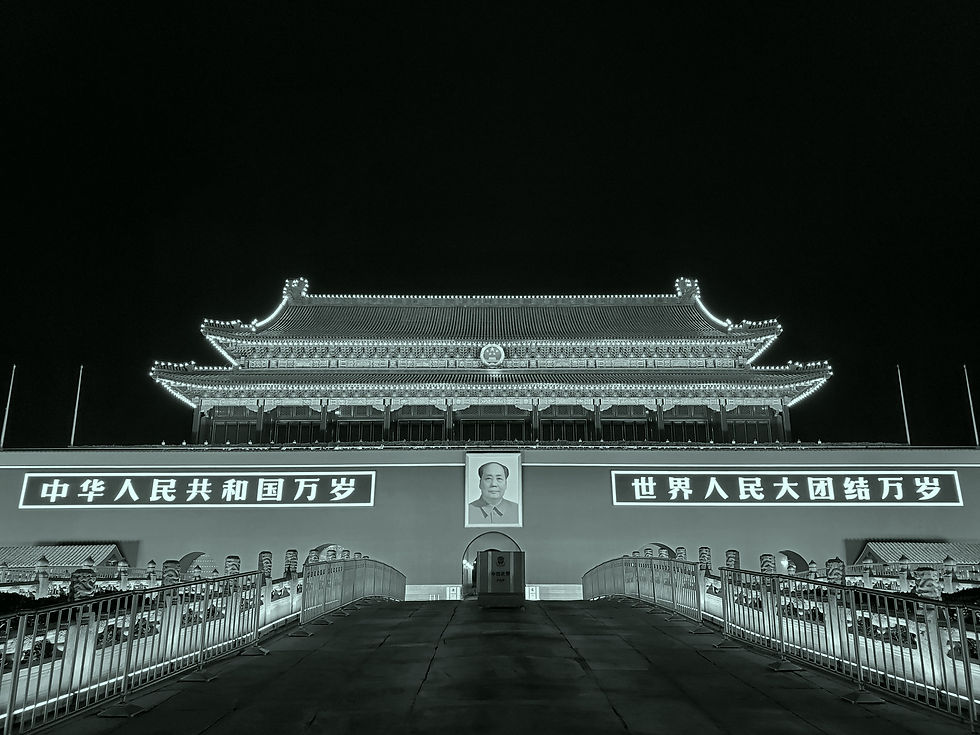
Earlier this week China laid out its industrial energy policy for the next five years as part of its sweeping national economic policy.
“Achieving the ‘double carbon’ target is not something we are told to do but something that we must do,” Xi said in a speech to the nation's politicians, according to an article in Hong Kong's South China Morning Post.
During last year's climate negotiations hosted by the United Nations in Scotland Chinese policymakers declined to set new targets for reducing greenhouse gas emissions.
While India's 2070 targets were welcomed by negotiators during the international talks, China's reluctance to make further commitments was one of many disappointing moments for the scientists and policymakers hoping to limit greenhouse gas emissions and avoid the most severe impacts of climate change.
For its part, China remained steadfast in its position that countries like the U.S. and members of the European Union would need to do more to accelerate their own emissions reductions efforts. Especially since they're the largest historical emitters of the greenhouse gases causing global climate change
Setting aside the diplomatic kerfuffle, China's targets for carbon neutrality by 2060 will still have country pushing at a breakneck pace to boost electric vehicle adoption, develop new renewable energy projects, and build out fossil-free nuclear power.
The scope of these efforts is staggering.
Chinese automakers sold 3.3 million electric cars last year, making the nation the number one market for EVs for the seventh year in a row. And the country intends for electric vehicles to account for 20% of all new auto sales by 2025 (although a recent Greenpeace report indicated Chinese automakers and foreign joint ventures aren't moving fast enough to meet those targets).
As for renewables, by 2030 China plans to have 1,200 gigawatts of solar and wind capacity come online (it's roughly the energy required to power the entire United States). By 2025, the country expects that 20% of its energy consumption will come from renewables. That renewable buildout will come with a roughly $300 billion in grid infrastructure like power lines, according to a Bloomberg News report.
And late last year, the nation announced plans to spend $440 billion to build 150 new reactors over the next 15 years. That's more than the rest of the world has built in the last 35 years, as Bloomberg News reported.
(These numbers put the price tag on President Joe Biden's stalled Build Back Better Act into perspective.)
Still, this buildout of renewables and nuclear doesn't mean that the country will give up on fossil fuels anytime soon, according to Xi's recent speech in Beijing.
“Emissions reduction does not mean curbing productivity or shutting down [production to stop] emissions. It’s taking the path of green and low-carbon development … and achieving greater development in green transformation,” he said.
Reading between the lines, it seems as though faced with slowing growth, Xi -- and by extension, China -- will still put economic development ahead of environmental concerns. “[We should] improve the awareness of the whole country, strengthen coordination of policies and measures, and fully consider the objective reality of regional resources and industrial distribution [in making plans],” Xi told Chinese leadership.
That objective reality includes boosting the energy efficiency and emissions reductions efforts in heavy industry -- even as those industries continue to burn coal, oil, and natural gas for power.
The measures cover a wide range of industries, including basic materials, renewables, construction, electric vehicles, transport, chemicals and utilities.
China has set a target to reduce its energy intensity by 13.5% by 2025 compared with 2020 levels from the previous five year plan. That includes cutting nitrogen oxide emissions and VOC emissions by 10% and slashing nitrogen and ammonia pollution by 8% in heavy industry.
Other targets include installing emissions reduction technologies in two-thirds of the country's iron and steel production facilities and around 30% of other energy intensive industries.
There were also mandates for the development of "energy-efficient" industrial areas and efficiency upgrades to existing buildings in both urban and rural areas.
“The five-year plan has set specific targets on reducing energy intensity, but no specific goals have been given on the total energy consumption level,” Yin Zhongshu, a researcher at the financial services firm Everbrite, wrote in a research report quoted in the South China Morning Post.
These policies will continue to move China toward its existing targets, but some experts say that walking the line between economic development and emissions reductions will be difficult for the world's second largest economy.
“China aims to achieve socialist modernisation by 2035 and it has a long way to go,” Yang Fuqiang, a research fellow with Peking University’s Institute of Energy, told the SCMP. “China’s carbon emissions have not decoupled from economic development. The decoupling will occur when China hits peak carbon emissions.”


Comments